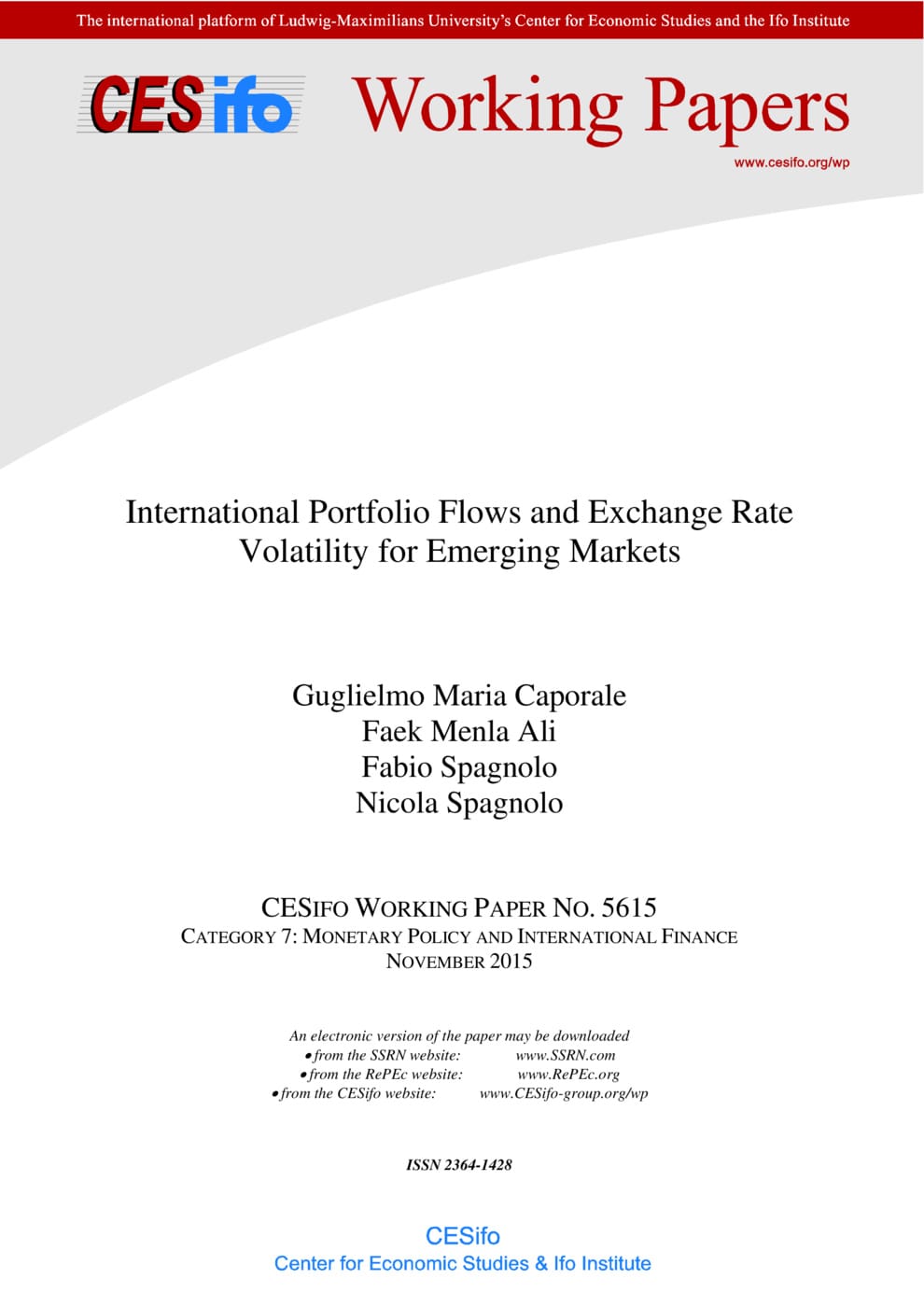International Portfolio Flows and Exchange Rate Volatility for Emerging Markets
CESifo, Munich, 2015
CESifo Working Paper No. 5615

This paper investigates the effects of equity and bond portfolio in.ows on exchange rate volatility, using monthly bilateral data for the US vis-a-vis eight Asian developing and emerging countries (India, Indonesia, South Korea, Pakistan, Hong Kong, Thailand, the Philippines, and Taiwan) over the period 1993:01-2012:11, and estimating a time-varying transition probability Markov-switching model. We find that net equity (bond) inflows drive the exchange rate to a high (low) volatility state. In particular, net bond inflows increase the probability of remaining in the low volatility state in the case of Pakistan, Thailand, and the Philippines, whilst they increase the probability of staying in the high volatility state in the case of Indonesia. Finally, net equity inflows from India, Indonesia, South Korea, Hong Kong, and Taiwan towards the US also increase the probability of staying in the high volatility state. These findings can be plausibly interpreted in terms of the “return-chasing” hypothesis and suggest that credit controls on portfolio flows could be an effective tool to stabilise the foreign exchange market.
Monetary Policy and International Finance
Empirical and Theoretical Methods